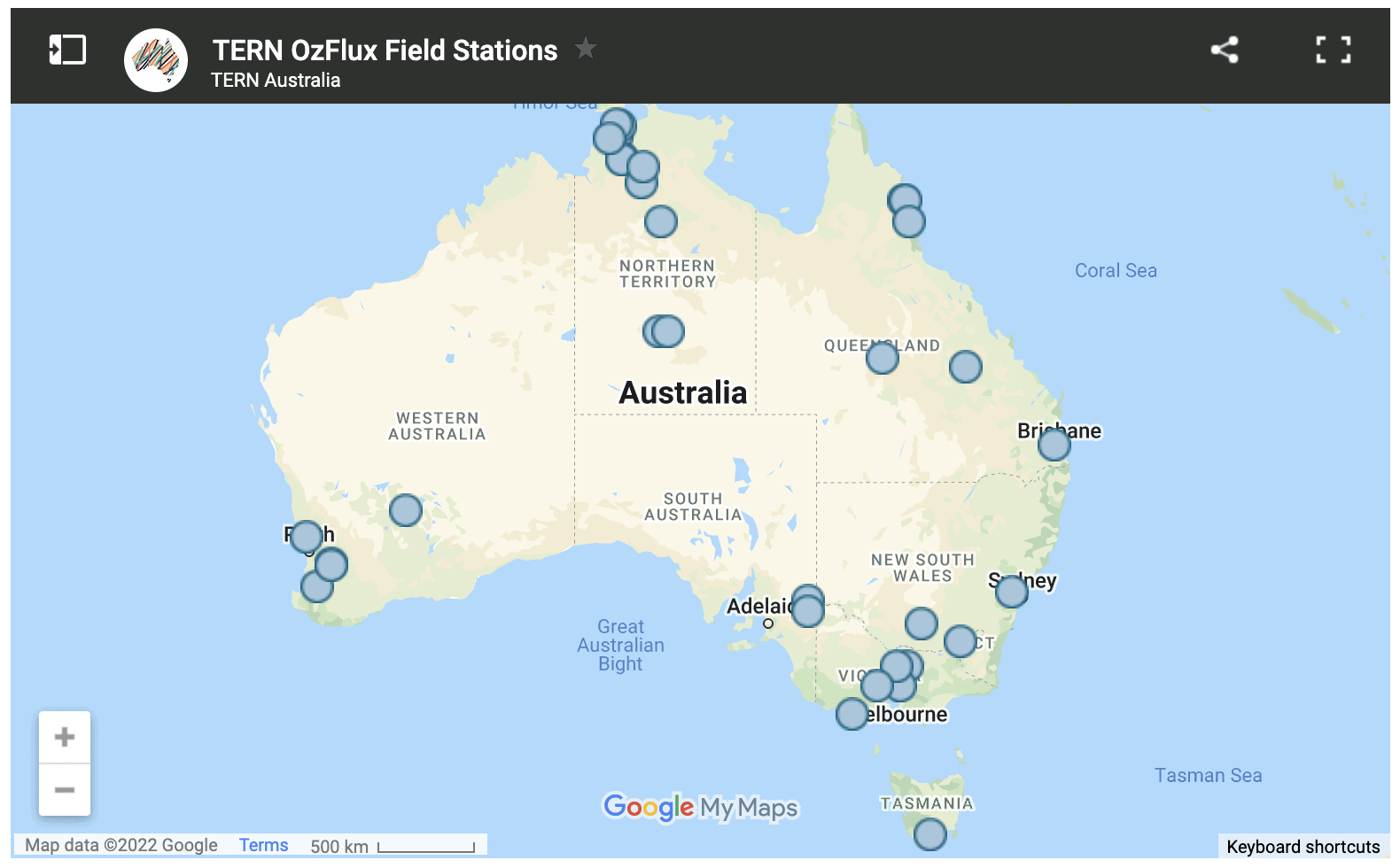Quickly and easily download micro-meteorological data from 33 TERN OzFlux ecosystem exchange measuring stations around Australia. This latest data release forms the Australian component of the global eddy-covariance data network, FLUXNET, and will continue enabling world-leading science on climate change’s impact on ecosystems and Green House Gas mapping and accounting at local to global scales.
TERN is excited to announce the latest release of micro-meteorological observations of land-atmosphere energy, carbon and water exchanges collected at 33 TERN-supported flux stations. The datasets are quality controlled, compliant to the Climate and Forecasts (CF) Metadata Convention and enriched with appropriate metadata to promote data reuse.
The data represent the Australian component of the global eddy-covariance data network, FLUXNET, which aggregates flux station data from more than 2000-member sites, including TERN OzFlux sites in Australia and New Zealand.
This data release is one of two annual TERN flux data releases, which form part of TERN’s enhanced practice for publishing dynamic datasets.
Access the data
TERN provides open access to quality-assured, quality-controlled (QA/QC), gap-filled datasets of Net Ecosystem Exchange (NEE), Gross Primary Productivity (GPP) and Ecosystem Respiration (ER) for the following sites:
High quality, FAIR flux data enable global impact
TERN OzFlux datasets are internationally recognised as being of a very high quality and containing very few data gaps and errors—as measured by the data’s energy balance closure.
All data have been processed using PyFluxPro (v3.3.0) as described in Isaac et al. (2017). PyFluxPro takes data recorded at the flux station and processes them to a final, gap-filled product with Net Ecosystem Exchange (NEE) partitioned into Gross Primary Productivity (GPP) and Ecosystem Respiration (ER).
All flux raw data are subject to QA/QC process and datasets contain quality control ‘flags’ which will indicate when data quality is poor and has been filled from alternative sources.
Good quality data and easy collaboration through established partnerships and formal agreements makes TERN a preferred partner in FLUXNET. They also enable extensive data use by local, national and global research and management organisations in applications ranging from new science to better understand climate change’s impact on ecosystems and their services, to Green House Gas exchange mapping and accounting.
Australian flux data form an integral part of international space missions by NASA and the European Space Agency (ESA), which use TERN OzFlux data to calibrate and validate space-borne Earth Observation data.
TERN and its global environmental research infrastructure partners, enable us to watch Earth breathe in and out, every hour, every day, over all seasons and across the changing years.
Flux monitoring field stations (L-R, T-B) Boyagin, WA, Litchfield, NT, Wombat, Vic, Daly River Pasture, NT, Gingin, WA, Samford, Qld.







